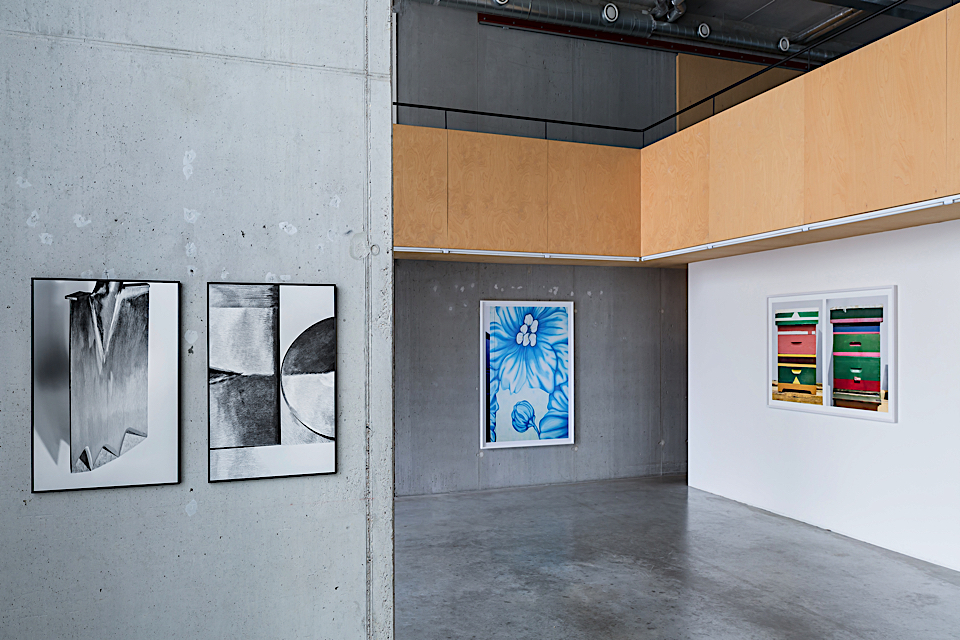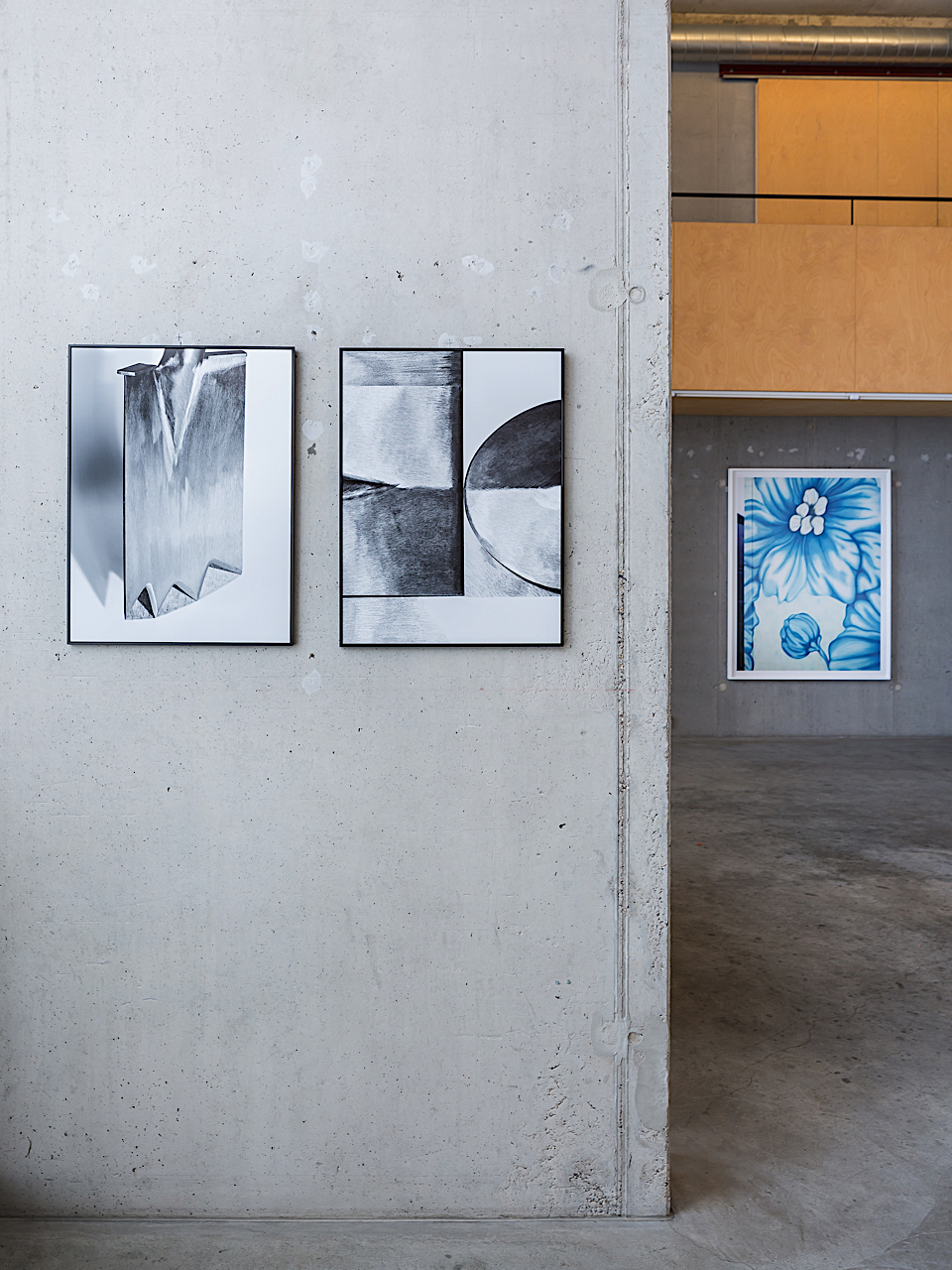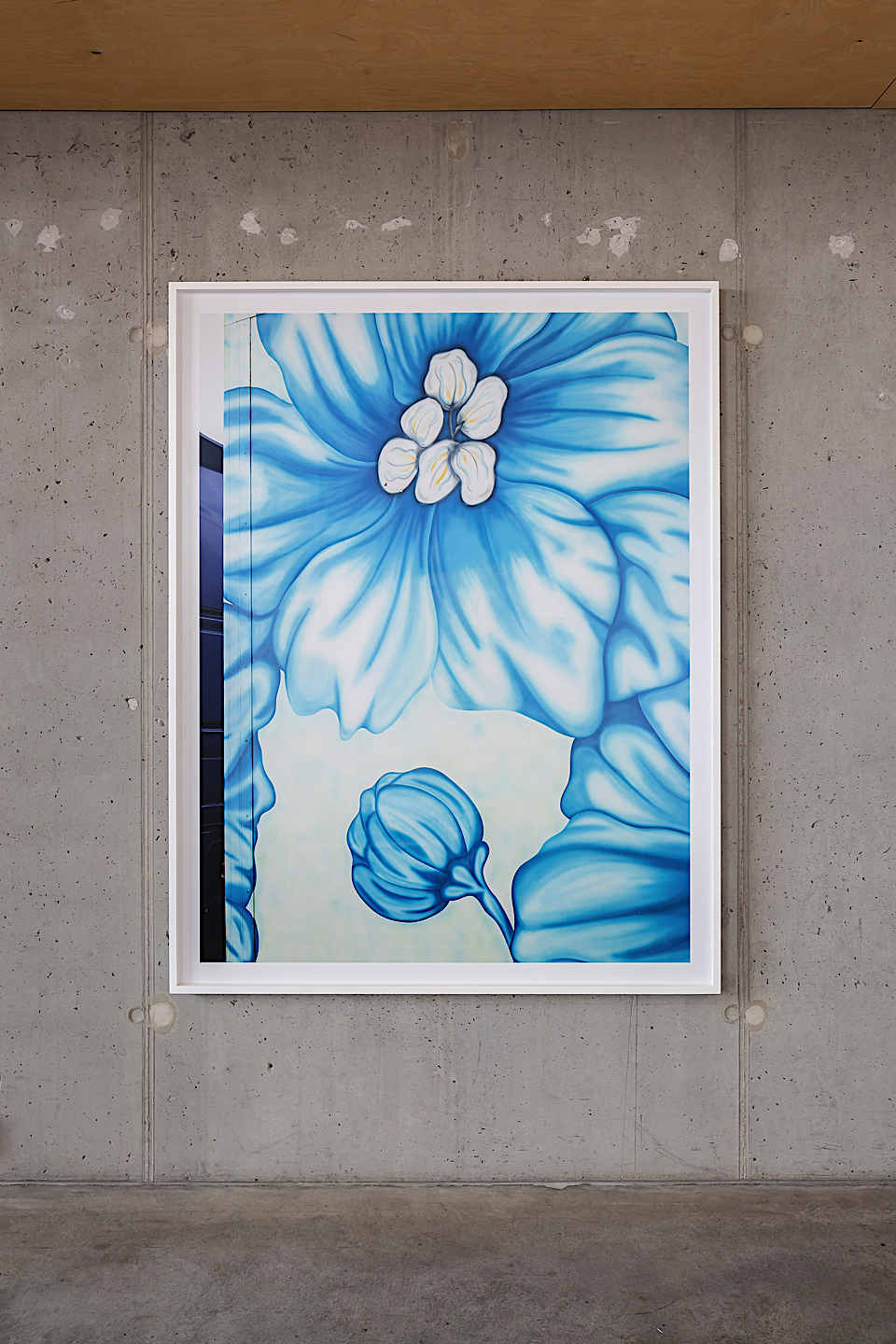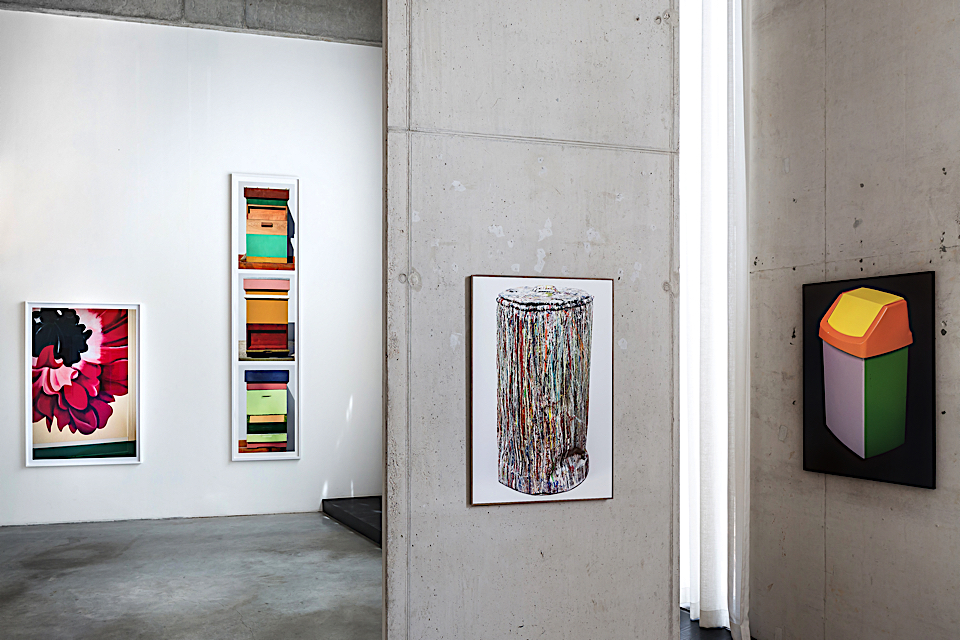COLOUR CODES
the workers
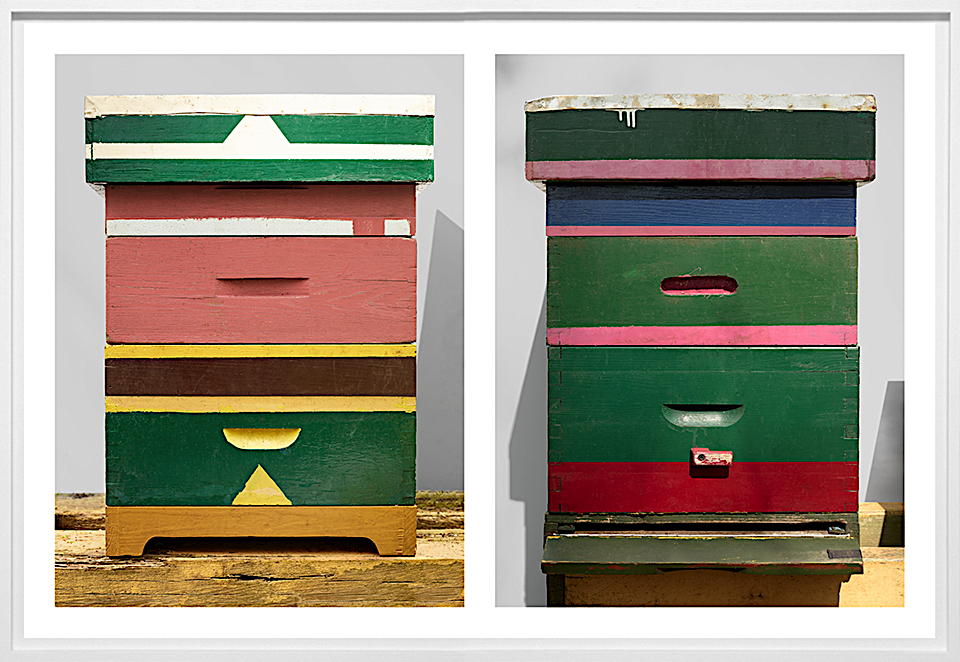
Scheltens & Abbenes are the sum total of a still-life photographer and the creative craftsmanship of an artist. They experiment with converting spatial dimensions into flat surfaces and explore intensively photography’s potential for creating illusion. Colours has a special importance in their work.‘The Workers’ is their last exhibition on show at the Ravestijn Gallery in Amsterdam. A bright statement !
It consists not only of still lives of painted flowers – printed large scale as to make the texture and every trace of use on the vans discernible – but also shows very mundane objects: different tools for gardening, beehives in various colours, a garbage can with layers of chemical paint spilled over its edges. On the photographs, however, the objects are transformed into highly stylised and aesthetic compositions, drawing attention to the colours and shapes, up to the point the viewer would almost forget their original context, as the play of textures and layers is endlessly fascinating.
What is not shown in these images are the humans hands that use the tools for gardening, to grow and cut the flowers the vans transport, that built and painted the beehives and tended to the bees. The images the viewers are left with are third hand, so to say. There are no flowers, nor bees, only man-made objects, all painted over, then taken up by the artists to be extracted from their context and to be made into an image.
The artists have added an extra layer, as it were, over these objects, and elevated them to aesthetic and abstract images – though still very recognizable, especially in their relation to each other. This layer serves as an extra remove but to remind the viewer of the original context of these objects and the processes of human intervention: to render objects useful, or, once assembled by the artists, to make appealing yet not obvious new compositions, images within the realm of art.
It is up to the viewer then, to imagine the possible narratives that these images allude to, the relation between man and nature, and between nature and aesthetics. This inevitably also leads to considerations as to the perilous position bees are now in due to pesticides and the impact their demise has on our ecosystem. Nature provides us generously with amazing beauty, but we can either admire it from a distance, or, as the viewer realises looking at these images, contemplate the deeper connections.
Until July 21st ‘The Workers’ is shown at the Ravestijn Gallery in Amsterdam
